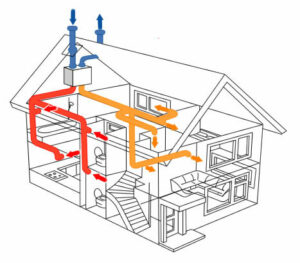Adulting means living by yourself or starting a family—which is challenging if you don’t have a roof over your head. While renting is a plausible option, owning a home is the most cost-effective option. One essential task is shopping mortgage rates in Louisville to find the best deal.

As buying a property entails substantial spending, most resort to taking out a home loan. According to a recent survey, the national average monthly mortgage payment, as of October 2022, was USD$2,012. This figure is a few hundred dollars more than the USD$1,666 median for the government-backed Federal Housing Administration.
Besides choosing government lenders, there are other ways to reduce mortgage rates. In this article, we’ll discuss comparison shopping for mortgage rates in and out of Louisville, Kentucky, with valuable insights on how to do it properly.
5 Tips for Comparison Shopping Mortgage Rates in Louisville
Mortgage rates have been on the uptick for a few months. As a reference, Louisville mortgage rates averaged 6.56% for the last week of January 2023, slightly higher than the national average of 6.16%. The figure represents a huge rise from 3.59% one year ago.
That said, it pays to shop around and compare to get the most value from your hard-earned money. Here’s how you can do it.
1. Understand how mortgage rates are calculated
All borrowers are subject to a credit risk assessment, which lets lenders evaluate the loan applicant’s financial condition and capacity to pay for their financial obligations.
Financial institutions typically consider several factors, including the borrower’s sources of income, credit history, current financial situation, personal worth, the type and term of the loan, and other factors. Note that assessment considerations vary from lender to lender, which means a prospective borrower will get different mortgage rates for a home loan.
2. Choose lenders who know you
Three primary options are available for government-backed housing loans: the Federal Housing Administration (FHA), Veterans Affairs (VA), and the United States Department of Agriculture (USDA).
These are the best options for borrowers who want to pay the lowest interest and downpayment rates. However, there are eligibility rules, and you may be restricted to the type and location of the property you can buy.
Otherwise, check at least three traditional and nontraditional financial institutions. Consider banks where you keep an account to negotiate for better rates, reducing your mortgage rates further.
3. Use point offers to reduce interest rates

Interest rates can either be fixed or adjustable. A fixed mortgage rate doesn’t change for the entire loan term. If you have a 30-year loan term, you’ll pay lower monthly rates and higher accumulated interest fees. Conversely, adjustable-rate mortgages often start lower than fixed-rate mortgages and increase in the succeeding years. The rates, however, are subject to certain percentage caps.
Some lenders offer mortgage or discount points in exchange for lowering your interest rates. A borrower would have to pay upfront costs to avail of this. One discount point represents one percent of your total loan amount. For instance, you save USD$4,000 by using one point for your USD$400,000 loan.
However, don’t be distracted by lower interest rates, as you can still pay more interest and other charges.
4. Look beyond interest rates when comparing mortgage rates
According to Lendingtree.com, borrowers in Louisville, Kentucky, can save as much as USD$46,570 or USD$129 in monthly mortgage just by doing mortgage shopping right.
Getting a loan estimate is crucial in determining the most cost-effective loan package. This document contains the loan amount, interest rate, loan terms, and other accompanying charges.
When evaluating loan estimates, examine the following:
- Annual percentage rates (APR): APR includes the interest rates and other loan charges incurred for the entire loan period. Knowing it lets you determine the actual loan repayment costs.
- Balloon payment: This enables borrowers to pay lower monthly mortgages, mostly consisting of interest. At the end of the term, the borrower is expected to pay off or refinance the principal loan amount.
- Closing costs: Closing costs represent the processing fees borrowers pay lenders to secure a loan. For reference, Kentucky’s average after-tax closing cost was USD$2,229.03 in 2021, approximately 1.11% to 2.23% of the final home sale price.
- Downpayment: Government lenders require zero to 3.5% downpayment, while most private institutions charge 20 percent. A higher downpayment typically means lower mortgage rates.
- Prepayment penalty: Check whether your bank imposes a prepayment penalty, which runs from one to two percent. This fee is charged if you pay off your loan earlier.
- Private mortgage insurance (PMI): Borrowers with less than 20% downpayment are required to pay for PMI, which is included in the computation for the monthly mortgage payment.
Knowing the amounts associated with these costs determines the most cost-effective loan option. For instance, some lenders may charge lower interest rates but impose hefty closing and downpayment costs.
5. Consider Your Future Plans
Keeping your finances in order is vital in ensuring you can pay your mortgage. Also, choosing the right mortgage offer will largely depend on how long you plan to stay on your property.
A long-term mortgage with fixed rates and discount points is best if you find a forever home or don’t intend to sell it in the next ten years. At the same time, it pays to look at the PMI costs and calculate the APR to optimize your payments.
Conversely, an adjustable-rate mortgage with shorter terms may be best for those planning to sell or refinance the property. Instead of looking at APR, considering the interest rates and other charges like prepayment penalties make better sense in such cases.
Concluding Thoughts
The only way to choose the best mortgage is by examining each of the lender’s loan estimates and aligning them with your goals and current financial situation. Your credit score, debt-to-income ratio, and future home plans help determine which offer works best for you.
More importantly, note that even a small difference in interest rates and recurring charges can significantly affect your mortgage rates. Shopping around for the most competitive mortgage rates is paramount, whether in Louisville or elsewhere in the country.



